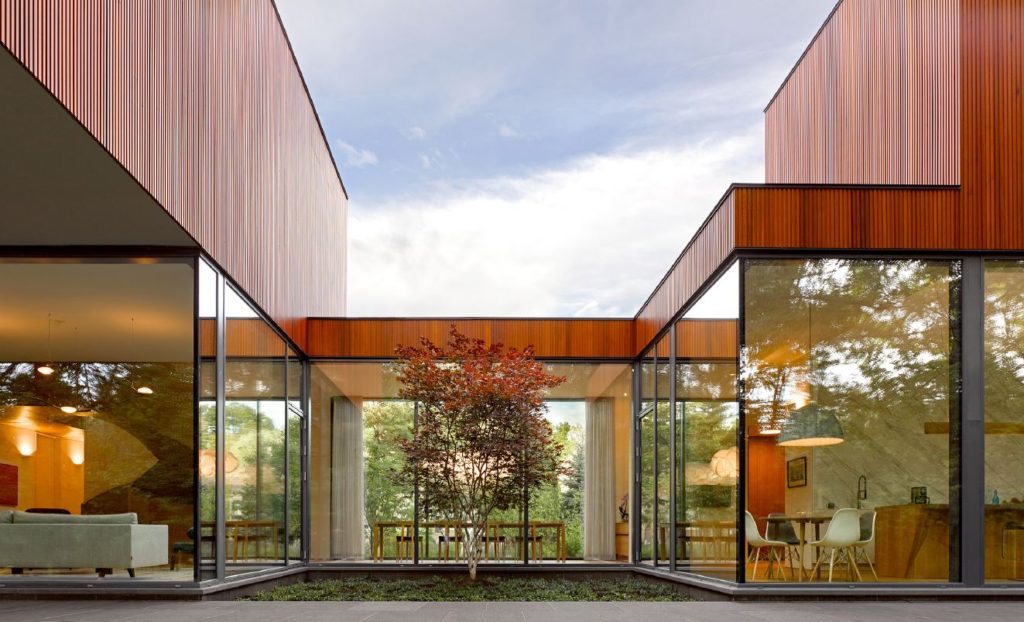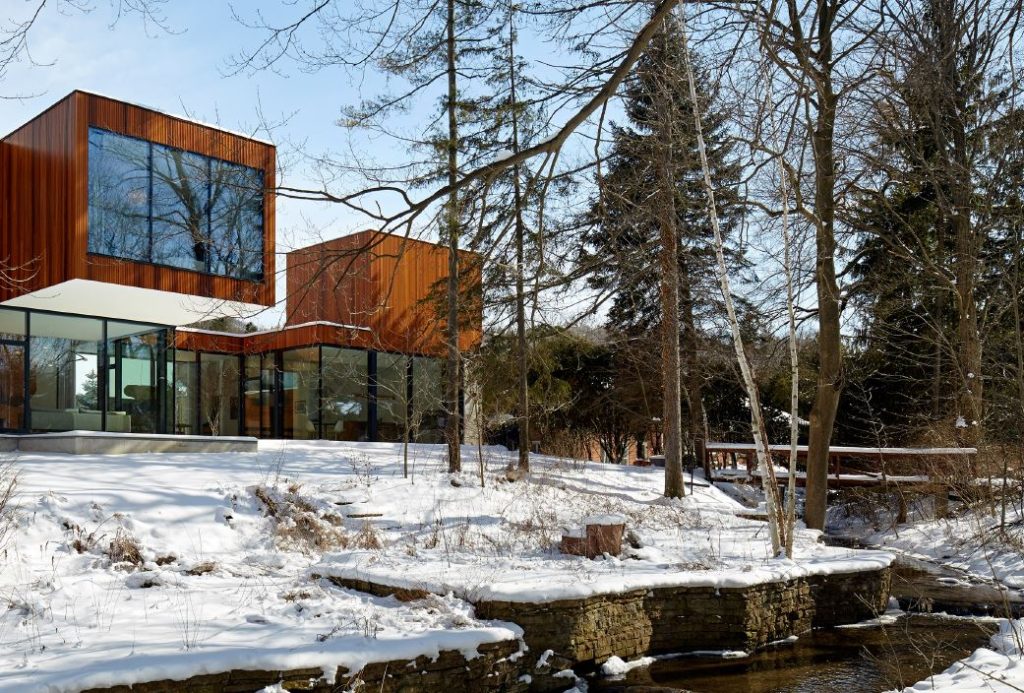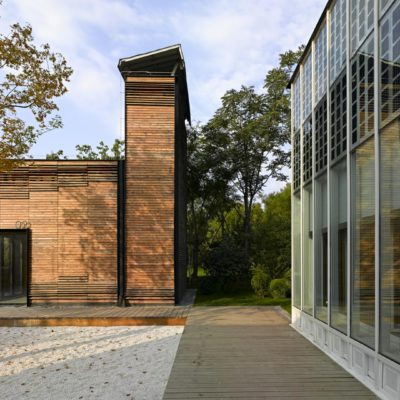House on Ancaster Creek

The parent’s suite occupies the ground floor with the living space anchoring the view. The suite is laid out as a single floor accessible apartment with added features to accommodate the specific challenges facing the ageing parents. Among them, well-located drains and a master power switch mitigate issues that have come with memory loss: a sink left running, or an oven left on.
Views of the creek and acoustic and visual protection from the busy street in front led to a solution of high performing triple-glazing that creates a quiet and comfortable interior environment while providing daylight to each room. (With the south and west sides protected by automatic shading timed to coincide with solar gain.) The courtyard allows the primary rooms to have light sources on two sides and also allows for important cross ventilation in each room. The kitchen and main stair are supplemented by skylights. An increased level of insulation in the exterior walls and the excellent construction of the building envelope allow the house to be heated and cooled efficiently.

To reduce the ecological footprint, energy consumption and generation were both addressed. Primarily, two families are now living on a single-family site in a reduced square footage that is smaller than what the local developer-driven houses are in this area, increasing density without increasing building area.
Triple-pane windows (Imperial U-value of 1.2) anchor the highly insulated envelope, while a 9.8 kW solar array was installed across two of the flat roofs, offsetting energy consumption. Combined with LED lighting and an efficient heating system, these measures culminate in a low-energy home that sits comfortably in this Northern climate. Collectively, this results in a EUI of 94 ekWh/m², which was calculated during the first year of occupancy, exceeding the permit year benchmark for single family homes for the 2030 challenge.

With sustainability at the forefront of the design process, the requirement of material durability was paramount. Careful detailing of local materials achieves this. The ground floor of the house is clad in 3-1/2” thick Algonquin limestone. The coursing is designed to highlight the compression that forms this sedimentary rock. 12” tall stones at the top compress to 4” at the bottom.
Milled cedar clads the upper volumes of the house. The boards were milled with thin shadow lines that create depth in the material and emphasize their verticality. A three-part finishing system extends the life of the wood and reduces the required maintenance work.

Pairing cedar cladding and local limestone on the exterior with white oak floors, cabinetry and spiral stair on the interior, connects this modern house to the Southern Ontario landscape. Wood’s inherent warmth, strength, lightness, and malleability combine to create everything from the structural framework for the house to a variety of finish conditions.



